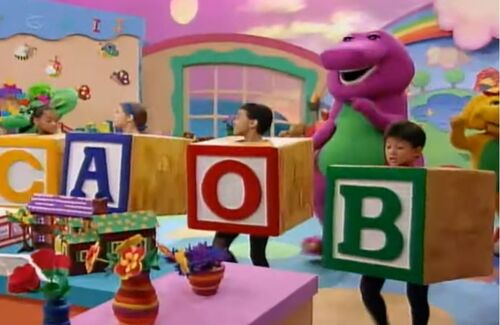I'm hyperorganized. Not just as a writer, but as a person. Last August, I sat down and planned out what I would be doing every night in November. Granted, November is National Novel Writing Month, so I had a pretty good idea what I was doing, but it's still a bit excessive. Here are eight of the gadgets and gimmicks I used to keep my brain and my stories in order.
1. Paint with Water
There's a scene in Crossed by Ally Condie where the character Ky explains how his artist mother used to paint with water. Their family could afford brushes, but not paint, so she'd paint on the desert rocks and watch her work dry up in the sun. Nothing was meant to last, but it gave her a chance to see what her work looked like outside of her head.
On both my phone and computer, I have a designated deletable document called Paint with Water. Whatever I type is meant to be erased, either by holding down the delete key or trashing the whole document, the next time I look at it. If Paint with Water produces something worth keeping, I rename it and create a new note.
2. Story Garden
When I get an idea and I know it's good enough to be a story, I put it in my Story Garden under Seedlings. I have about seventy of these. Each seedling has a title, a one line title, and nothing else. When my Seedling reaches around 10,000 words in length, I move it down to Sproutlings. Finish projects go under Trees (novels) or Shrubs (short stories). Yes, I know this should be a Story Forest instead of a garden, but that's what I named it long ago.
3. Beginnings and Snippets
Every writer's had a computer clogged up with dozens of half-started stories. That's why I put all my beginnings in one document. When the seedlings start sprouting, I copy and paste them into a new home. What about story fragments that don't have a beginning? They go in Snippets. Like Beginnings, they migrate once they're big enough to find their own way.
4. General Resources
This is where I keep all my lists. Names, themes, what-ifs, and other odds and ends I haven't had the chance to use yet. Before my computer crashed, Story Garden lived in this file. Now it has its own space. It's like my story stockroom. Each individual project also has a file called (Story Name) Resources.
5. Choose Your Tools Wisely
Pens are for prose, yearbook autographs, check lists, schedules, and everything else you might want to write down. For a long time, I didn't see why anyone would want to write in pencil. Unless you like painting with water. Or math. This week, I finally figured out what pencils are built for: poems! With prose, I can cross out words or lines I don't like. Poetry is meant to look a certain way on the page. I'm constantly adjusting end rhymes, punctuation, and line breaks. Some writers will use their tools the other way around, but this is what works for me.
6. Dialogue-Only Rough Drafts
Dialogue is the easiest thing for me to write. When I have a scene in the works, I write the speakers' initials in the margins and put occasional parentheses for movement and other notes. One of my actress friends says I'm basically writing a script.
7. Timelines and Alphabet Parade
I try not to give two characters the same initials when I can help it. I also need an idea of how long my story is going to take. For each project, I have a timeline and alphabetical list of character names in the that project's Resources.
8. Other Tips, Tricks, and Tidbits
When I get an idea but don't know if it's Seedling-worthy, I jot it down in my notebook and put a star in the margins so I can find it later. Each page has a character name, title, or title acronym of whatever I'm working on so I can find it when I'm flipping through later. Here are some examples.
This is how I stay sane. How do you keep your writing organized?
 |
1. Paint with Water
There's a scene in Crossed by Ally Condie where the character Ky explains how his artist mother used to paint with water. Their family could afford brushes, but not paint, so she'd paint on the desert rocks and watch her work dry up in the sun. Nothing was meant to last, but it gave her a chance to see what her work looked like outside of her head.
On both my phone and computer, I have a designated deletable document called Paint with Water. Whatever I type is meant to be erased, either by holding down the delete key or trashing the whole document, the next time I look at it. If Paint with Water produces something worth keeping, I rename it and create a new note.
2. Story Garden
When I get an idea and I know it's good enough to be a story, I put it in my Story Garden under Seedlings. I have about seventy of these. Each seedling has a title, a one line title, and nothing else. When my Seedling reaches around 10,000 words in length, I move it down to Sproutlings. Finish projects go under Trees (novels) or Shrubs (short stories). Yes, I know this should be a Story Forest instead of a garden, but that's what I named it long ago.
 |
Every writer's had a computer clogged up with dozens of half-started stories. That's why I put all my beginnings in one document. When the seedlings start sprouting, I copy and paste them into a new home. What about story fragments that don't have a beginning? They go in Snippets. Like Beginnings, they migrate once they're big enough to find their own way.
 |
4. General Resources
This is where I keep all my lists. Names, themes, what-ifs, and other odds and ends I haven't had the chance to use yet. Before my computer crashed, Story Garden lived in this file. Now it has its own space. It's like my story stockroom. Each individual project also has a file called (Story Name) Resources.
 |
Pens are for prose, yearbook autographs, check lists, schedules, and everything else you might want to write down. For a long time, I didn't see why anyone would want to write in pencil. Unless you like painting with water. Or math. This week, I finally figured out what pencils are built for: poems! With prose, I can cross out words or lines I don't like. Poetry is meant to look a certain way on the page. I'm constantly adjusting end rhymes, punctuation, and line breaks. Some writers will use their tools the other way around, but this is what works for me.
Dialogue is the easiest thing for me to write. When I have a scene in the works, I write the speakers' initials in the margins and put occasional parentheses for movement and other notes. One of my actress friends says I'm basically writing a script.
 |
I try not to give two characters the same initials when I can help it. I also need an idea of how long my story is going to take. For each project, I have a timeline and alphabetical list of character names in the that project's Resources.
8. Other Tips, Tricks, and Tidbits
When I get an idea but don't know if it's Seedling-worthy, I jot it down in my notebook and put a star in the margins so I can find it later. Each page has a character name, title, or title acronym of whatever I'm working on so I can find it when I'm flipping through later. Here are some examples.
No comments:
Post a Comment